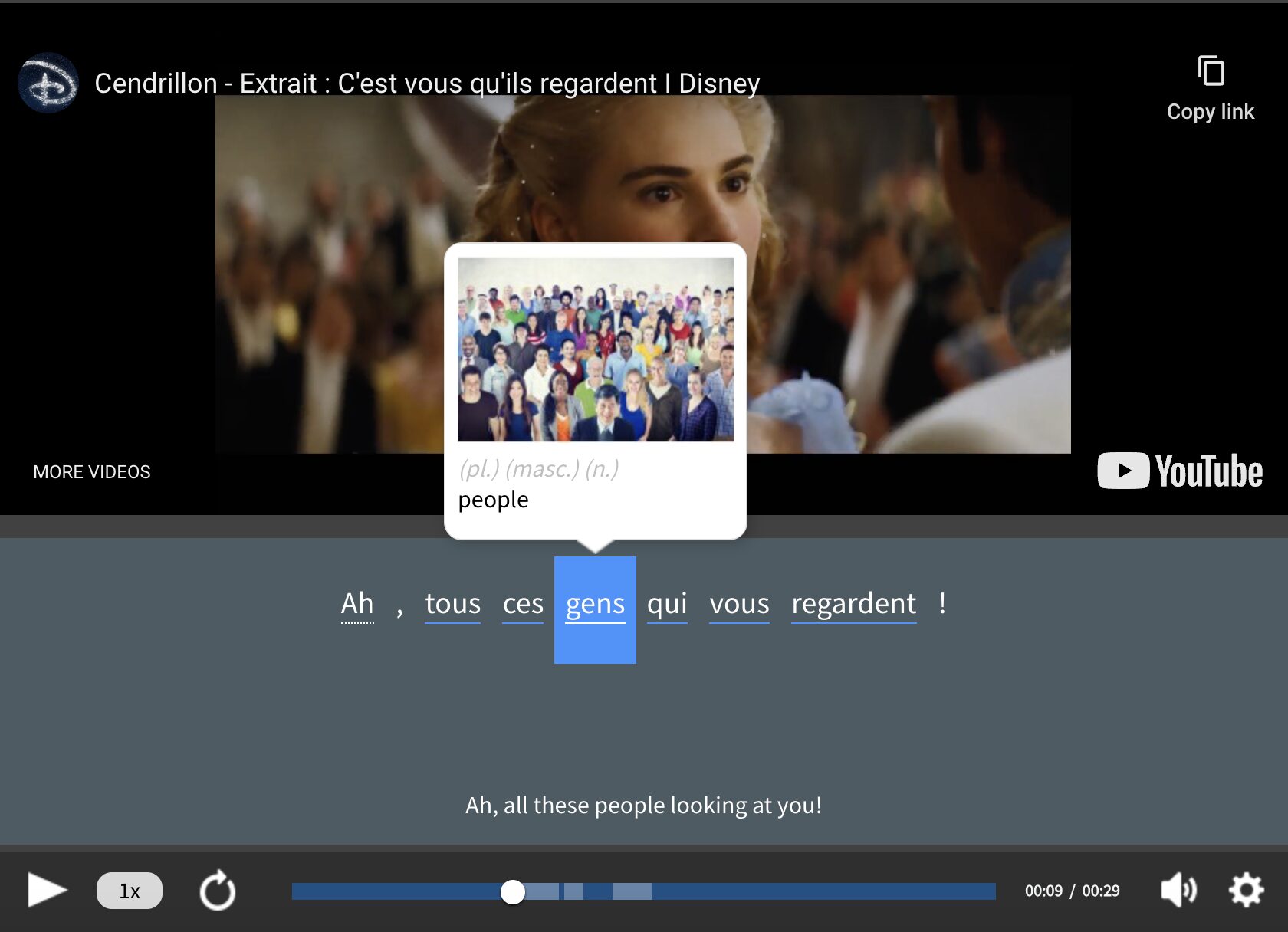French Reflexive Pronouns

Reflexive pronouns are a staple in French grammar.
But ne te décourage pas (don’t get discouraged)! See that little te there? Cute, right? It’s a reflexive pronoun.
And they’re everywhere!
So let’s talk about how you can master them, shall we? We’ll cover five tips to help you feel more confident.
Download: This blog post is available as a convenient and portable PDF that you can take anywhere. Click here to get a copy. (Download)
What Are Reflexive Pronouns and How Are They Used?
Reflexive pronouns are pronouns that accompany pronominal verbs. In their infinitive form, pronominal verbs appear with the reflexive pronoun se (he/she/it). For example, as in se brûler (to burn oneself), or s’habiller (to get dressed).
The truth is, you’re already surrounded by reflexive pronouns. Je m’appelle ___ (my name is___) is one of the first sentences many students of French learn to say. It contains the reflexive verb s’appeller (to call oneself) and the reflexive pronoun me (me, myself).
The Different Kinds of Pronominal Verbs
Pronominal verbs come in three varieties: reflexive, reciprocal and idiomatic:
- Reflexive verbs are used when the subject performs the action on itself. Examples include s’asseoir (to sit down), s’habiller (to dress oneself/to get dressed) and se réveiller (to wake up).
- Reciprocal verbs are used to express action between more than one person. Examples include s’aimer (to love each other), se disputer (to argue) and se regarder (to look at each other). Reciprocal verbs involve more than one subject.
- Idiomatic verbs are neither reflexive nor reciprocal in the literal sense. They just are the way they are and mean what they mean. Examples include s’amuser (to have fun), se souvenir de (to remember) and se taire (to be quiet).
Introducing the Reflexive Pronouns
So back to these reflexive pronouns: we’re interested in the little bit that comes before the -er/-ir/-re part of the verb, the part that serves to reiterate the verb’s subject. Let’s take a closer look at our main cast of characters, shall we?
| me/m' | me, myself |
| te/t' | you, yourself |
| se/s' | him(self), her(self), it(self) |
| nous | us, ourselves |
| vous | you, yourself, yourselves |
| se/s' | them, themselves |
Take note: For the first, second and third person singular, as well as third person plural, a contracted form of the pronoun is used when it precedes a vowel or an h muet (silent h).
5 Tips for Mastering French Reflexive Pronouns
Don’t sweat it. Just follow these 5 simple rules and you’ll be a pro at French reflexive pronouns in no time.
1. Always Agree With Number and Gender
To it put another way, there must always be agreement between the reflexive pronoun and the subject of the verb with regard to number and gender. Let’s look at some sentences, shall we?
| Je me lève. | I wake up. |
| Tu te lèves. | You wake up. |
| Il/elle/on se lève. | He/she/it wakes up. |
| Nous nous levons. | We wake up. |
| Vous vous levez. | You wake up. |
| Ils/elles se lèvent. | They wake up. |
You see? Pronominal verbs are conjugated just like regular, non-pronominal verbs. They just need to have the corresponding reflexive pronoun slotted in.
2. Watch Your Word Order
For the most part, and as you’ll have noticed above, the reflexive pronoun will precede the verb directly, regardless of tense, mood or verb form. Let’s take a look at some more examples.
| Futur proche (near future) | Je vais me lever tôt demain. | I am going to wake up early tomorrow. |
| Futur simple (simple future) | Tu t'amuseras. | You will have fun. |
| Imparfait (imperfect) | Nous nous asseyions. | We were sitting down. |
Now, when we’re using the negative, the ne precedes the reflexive pronoun and the pas follows the verb:
Je ne me lèverai pas tôt demain. — I will not wake up early tomorrow.
Vous ne vous lavez pas les mains. — You (all) didn’t wash your hands.
3. Pay Attention to the Imperative Switch
There are some exceptions to the aforementioned rule about word order. Indeed, what would a French grammar lesson be without exceptions?
In the imperative mood, the reflexive pronoun is placed after the verb and is preceded by a hyphen.
Levez-vous ! — Wake up!
Habillez-vous ! — Get dressed!
Another switch takes place in the imperative for the first and second person singular pronouns, me and te: They become the stressed pronouns moi and toi.
Lève-toi ! — Get up!
Coiffe-moi ! — Do my hair!
Take note: The “s” in the conjugated form disappears from the tu form, a basic rule for the imperative.
In negative commands with pronominal verbs, the reflexive pronoun returns to its rightful place in front of the verb and the subject pronouns tu, nous and vous are dropped.
Ne t’assieds pas ! — Don’t sit down!
Ne vous levez pas ! — Don’t get up!
Want practice? Check out this quiz on the imperative mood.
4. Be Aware of Other Ways Things Can Get Messy
For compound tenses, such as the passé composé (the past perfect), pronomical verbs take the auxiliary être (to be) and the reflexive pronoun precedes the auxiliary.
Check out this fill-in-the blank quiz to make sure your past tense game is on point.
Agreement of the past participle with the reflexive pronoun occurs when the direct object is placed in front of the verb.
In most cases, the reflexive pronoun is a direct object:
Nous nous sommes lavés. — We (each) washed ourselves.
Who did we wash? Ourselves. The direct object is nous. Since it appears before the verb, agreement takes place, hence the “s” tacked onto the past participle.
However, there is no agreement of the past particle with the reflexive pronoun when the direct object is placed after the verb:
Nous nous sommes brossé les dents. — We brushed our teeth.
What did we brush? Les dents (teeth), which appears after the verb.
When dealing with reflexive pronouns in negative sentences that involve compound tenses, the ne precedes the reflexive pronoun and pas goes in between the appropriately conjugated form of être and the past participle.
Je ne me suis pas levé tard. — I didn’t wake up late.
5. Respect the Difference Between Se and Le
It’s not hard to mix up the third person singular reflexive pronoun se with the direct object pronoun le. As mentioned above, the reflexive pronoun is oftentimes a direct object itself.
Certain verbs can be reflexive or non‐reflexive, depending upon whom or what the action is performed. For example faire (to do, to make) can become se faire (to make oneself):
Marie se fait à manger. — Marie makes herself something to eat.
There’s also another possibility:
Marie fait un sandwich. — Marie makes a sandwich.
What did Marie make? A sandwich. The direct object is sandwich, so we use the direct object pronoun le to get:
Marie le fait. — Marie makes it.
FluentU takes authentic videos—like music videos, movie trailers, news and inspiring talks—and turns them into personalized language learning lessons.
You can try FluentU for free for 2 weeks. Check out the website or download the iOS app or Android app.
P.S. Click here to take advantage of our current sale! (Expires at the end of this month.)
How to Put These Rules to Use and Emerge Victorious
- Write. Find a short newspaper article or blog post (not too short, though!), and identify as many sentences as you can in which there are reflexive pronouns and verbs. Next, transform the tense or mood of the relevant sentence. For example, if the sentence is in the present tense, change it to the passé composé. Next, if you’re feeling feisty, negate your new sentences in the new tense.
- Listen. Pick a short radio broadcast or podcast. Jot down the pronominal verbs you hear. Next, identify their types: reciprocal, reflexive, idiomatic. This will require you to parse the meaning of certain verbs that can be reflexive or non‐reflexive, depending upon whom or what the action is performed. Can you hear the difference between servir (to serve) and se servir (to use)?
- Talk yourself through it. A great way to sharpen your speaking chops is to record yourself. Do the reflexive pronouns roll off your tongue or are you struggling to make yourself heard? A great exercise is to talk about your morning routine: “I wake up, I get dressed and I make myself something to eat…” and then talk about someone else’s. What did you do? What did you not do, and when?
This should jump-start you on your journey to reflexive pronoun mastery.
Just be sure to practice, and amuse-toi bien (have fun)!
Download: This blog post is available as a convenient and portable PDF that you can take anywhere. Click here to get a copy. (Download)
And One More Thing...
If you like learning French at your own pace and from the comfort of your device, I have to tell you about FluentU.
FluentU makes it easier (and way more fun) to learn French by making real content like movies and series accessible to learners. You can check out FluentU's curated video library, or bring our learning tools directly to Netflix or YouTube with the FluentU Chrome extension.
One of the features I find most helpful is the interactive captions—you can tap on any word to see its meaning, an image, pronunciation, and other examples from different contexts. It’s a great way to pick up French vocab without having to pause and look things up separately.
FluentU also helps reinforce what you’ve learned with personalized quizzes. You can swipe through extra examples and complete engaging exercises that adapt to your progress. You'll get extra practice with the words you find more challenging and even be reminded you when it’s time to review!
You can use FluentU on your computer, tablet, or phone with our app for Apple or Android devices. Click here to take advantage of our current sale! (Expires at the end of this month.)











